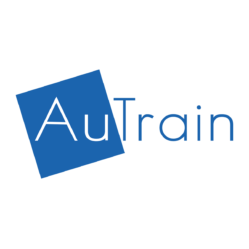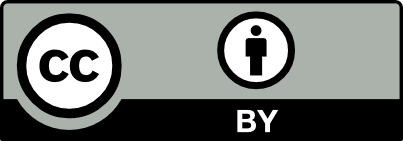11:30 – 12:00
Wrap up
Activity: Reflection 6.1
References & Resources
Questions?
Goodbye & thanks
#7. Wrap up the session by summarizing the main points, and monitoring participants learning
Note: Present slides number 18 and 19
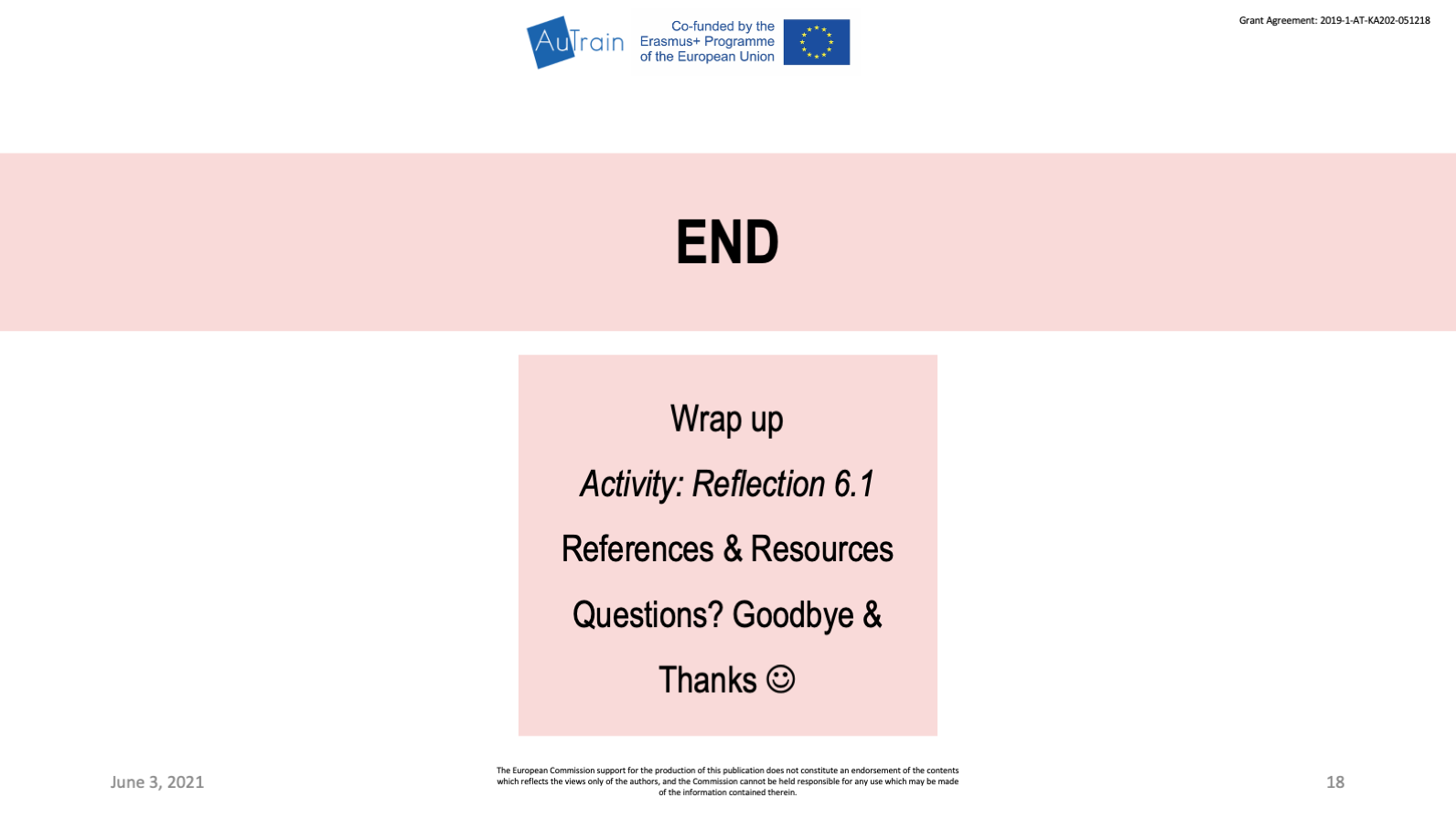
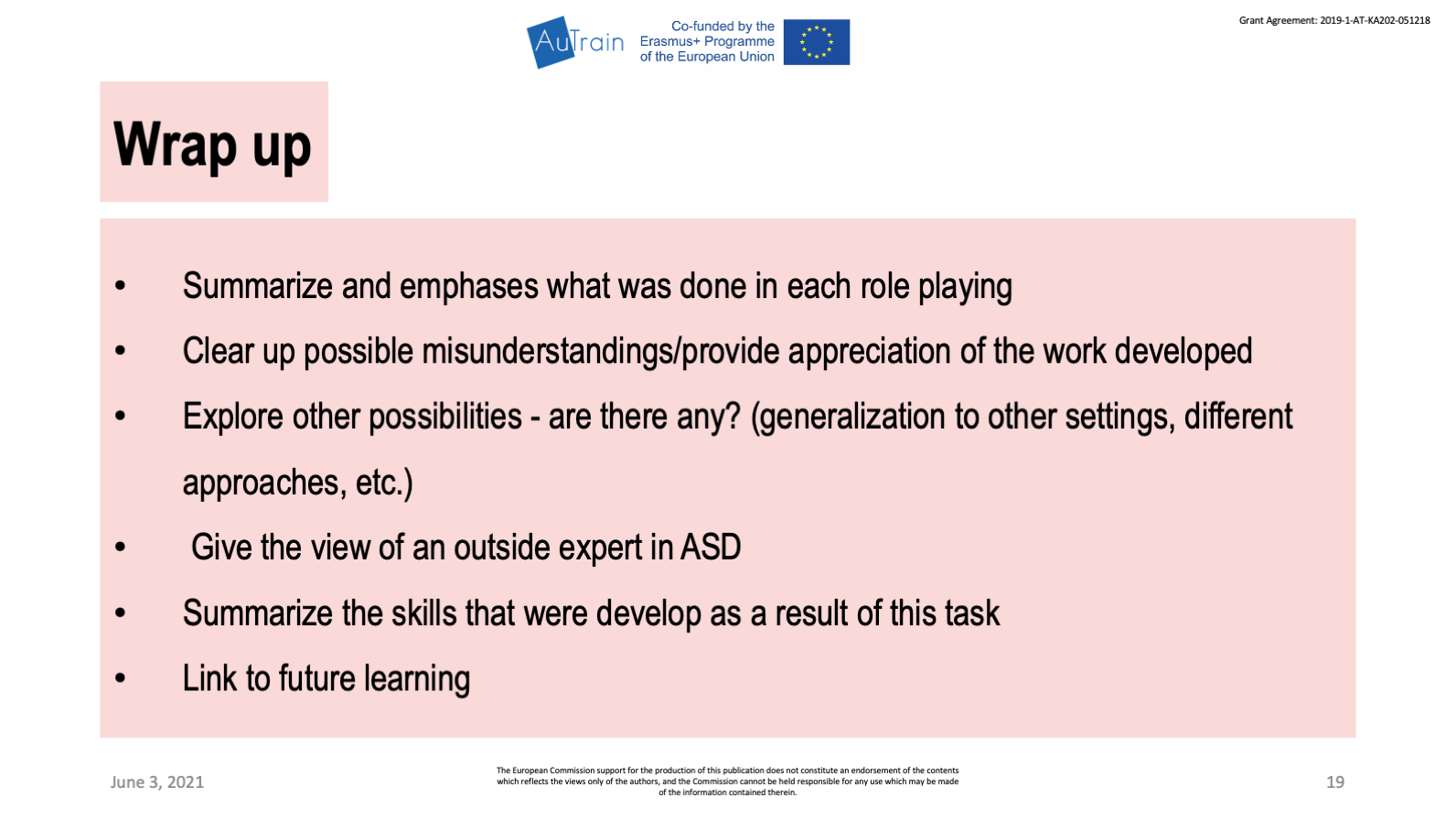
Provide your view of the following topics (use the notes from the role playing performance), among others that may emerge from the role playing:
- Summarize and emphases what was done in each role playing;
- Clear up possible misunderstandings/provide appreciation of the work developed;
- Explore other possibilities – are there any? (generalization to other settings, different approaches, etc.);
- Give the view of an outside expert in ASD;
- Summarize the skills that were develop as a result of this task;
- Link to future learning.
Ask for final comments, doubts, or questions.
#8. Activity: Reflection 6.1
Note: Present slide number 20
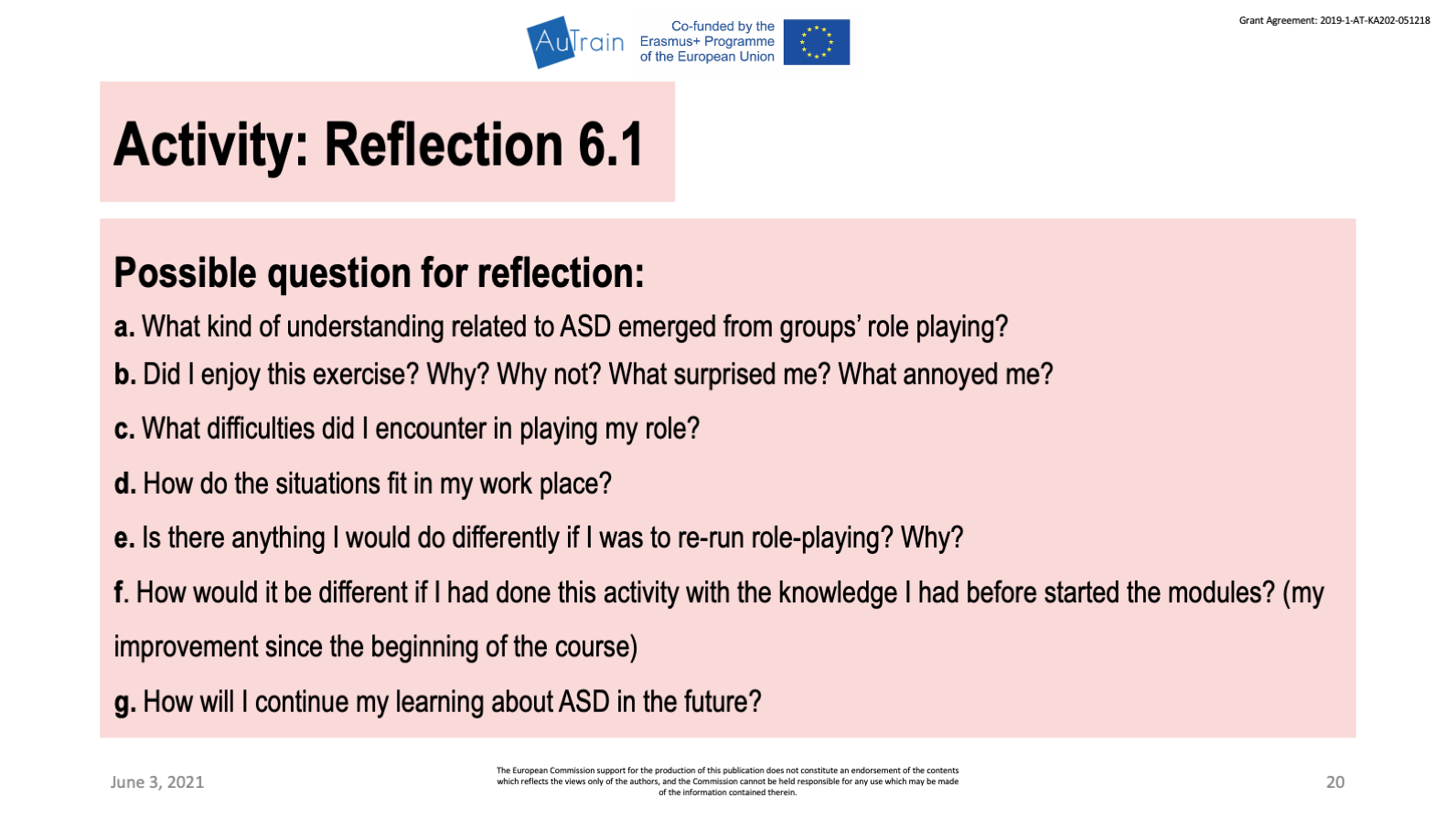
Introduce the aim of the activity
Participants will take reflective notes, to show what they are learning about the topic of the module as well as showing how they develop critical and reflective skills. These reflections will be shared with the group.The aim of this activity is to provide information about some common misconceptions of autism to the participants, both overly positive and negative ones and false ones. It is important that people have a realistic picture of autism, do not overgeneralize, or believe in myths put forward but autistic and non-autistic people. This completes all the other information that they received before on the individual nature of autism phenotypes and to follow a scientifically based approach.
Introduce the material: The Worksheet Activity: reflection 6.1
Procedures
Present the questions for reflection:
a. What kind of understanding related to ASD emerged from groups’ role playing?
b. Did I enjoy this exercise? Why? Why not? What surprised me? What annoyed me?
c. What difficulties did I encounter in playing my role?
d. How do the situations fit in my work place?
e. Is there anything I would do differently if you were to rerun the role-play? Why?
f. How would it be different if we had done this activity with the knowledge I had before started the modules? (my improvement since the beginning of the course)
g. How will I continue my learning about ASD in the future?
Ask for doubts or questions.
- Ask participants to be prepared to discuss these questions after giving them time for prepare their answers.
- Inform participants they will (1) think individually about the answers to the questions; and (2) share ideas with the large group.
Ask for final comments or doubts about the session.
#9. Introduce References & Resources, and indicate where participants can find it in the Autrain platform
Note: Present slides number 21 to 23
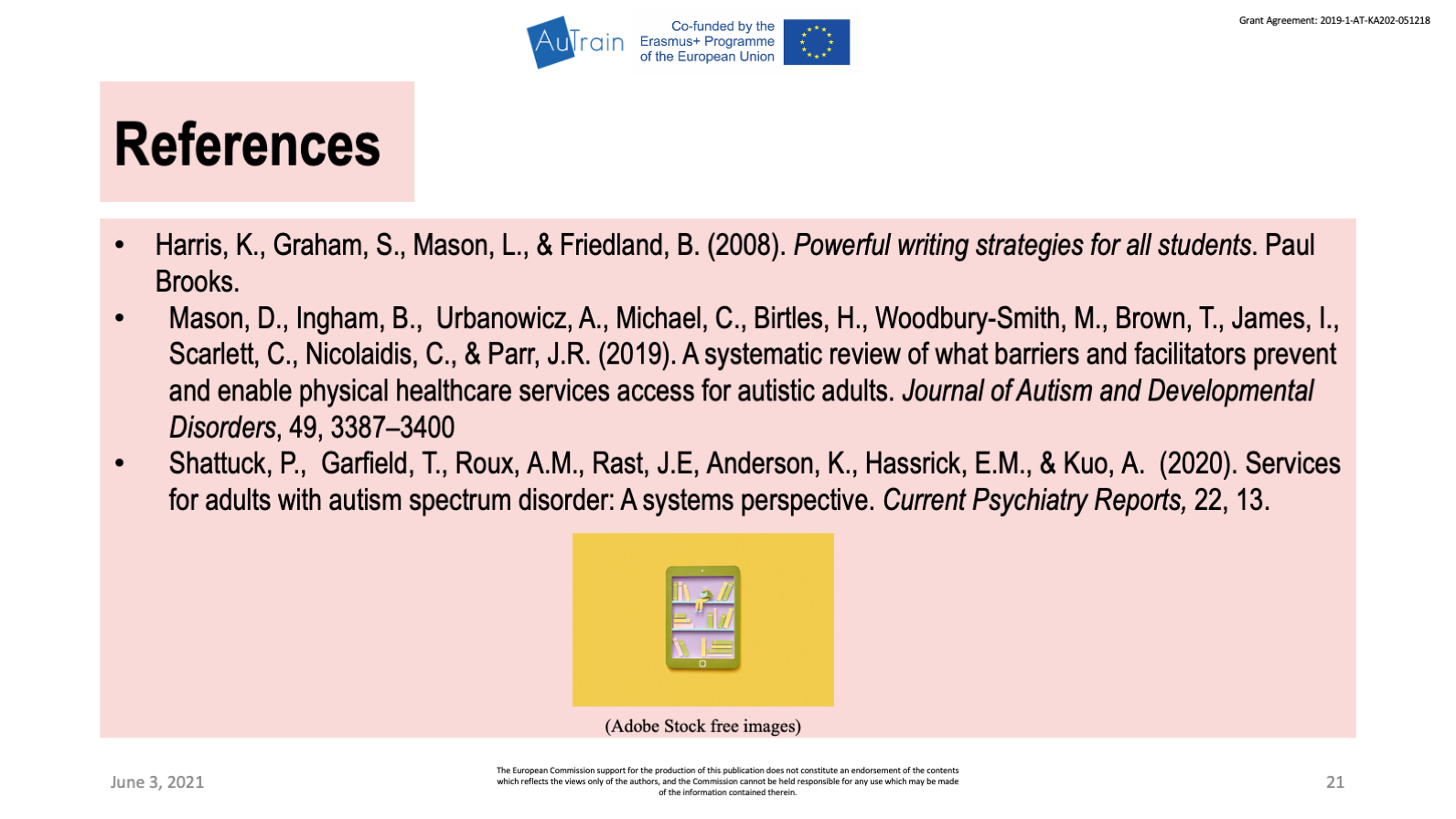
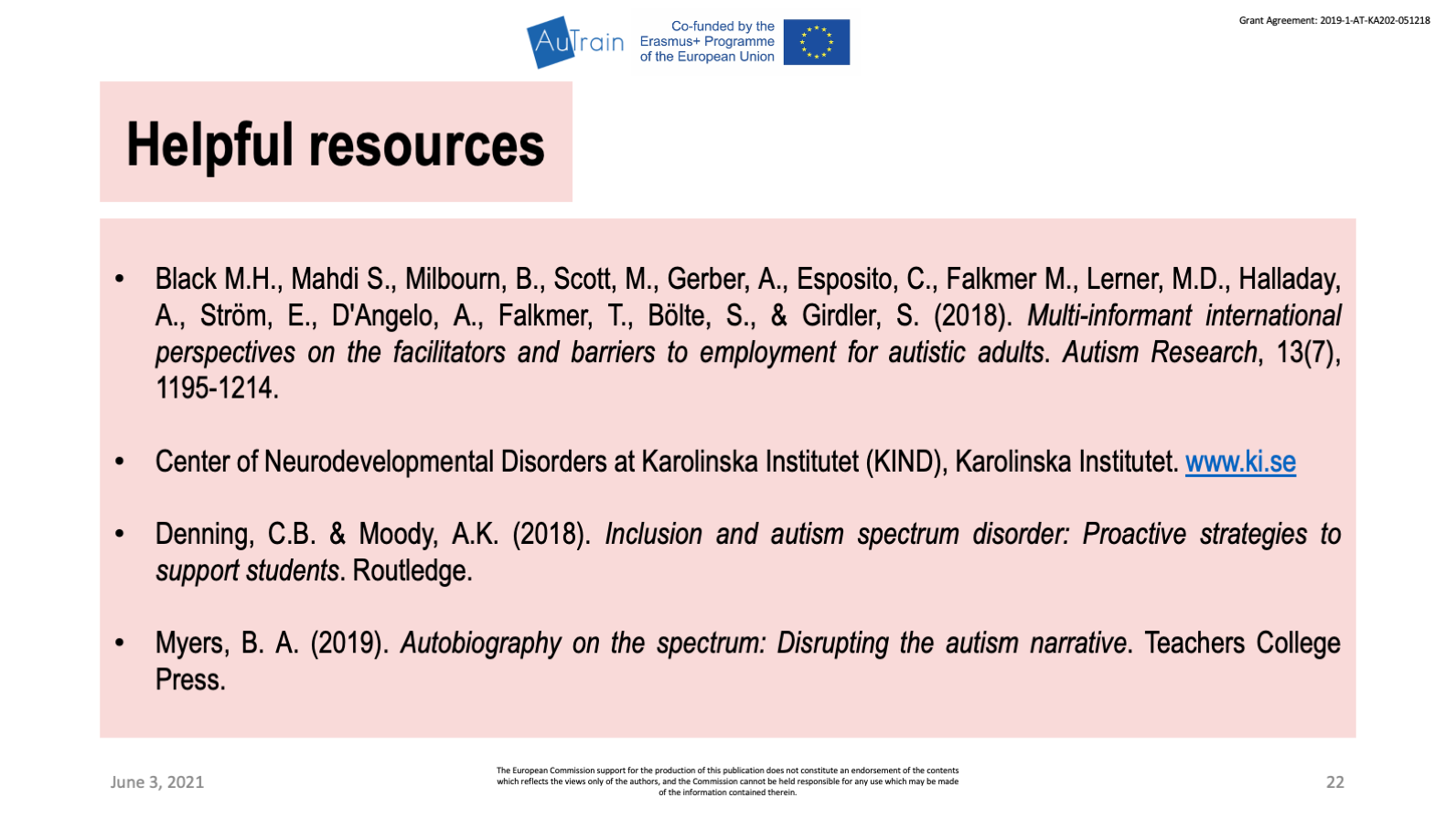
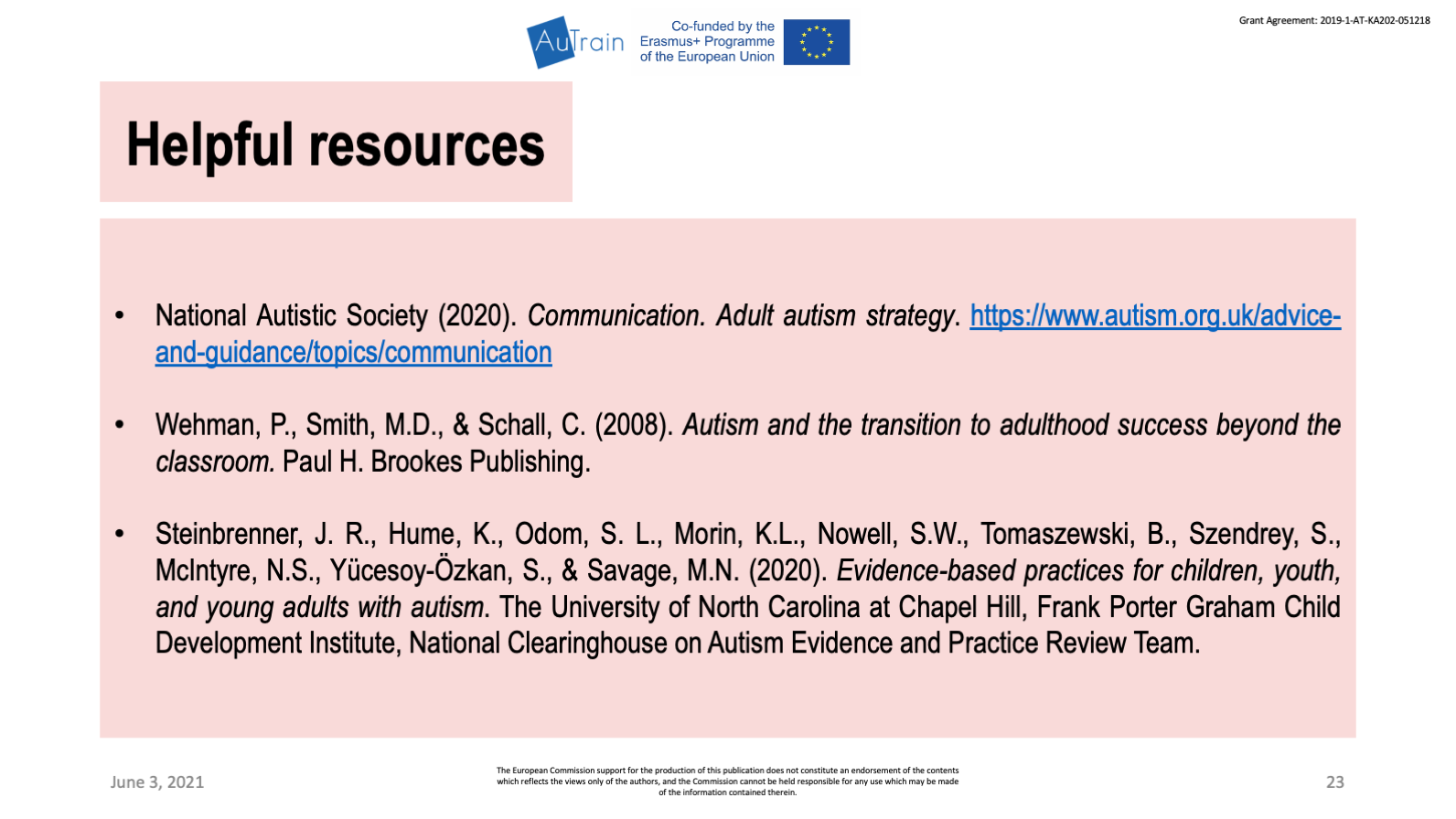
References
- Harris., K, Graham. S., Mason, L., & Friedland, B. (2008). Powerful writing strategies for all students. Paul Brooks.
- Mason, D., Ingham, B., Urbanowicz, A., Michael, C., Birtles, H., Woodbury, Smith, M., Brown, T., James, I., Scarlett, C., Nicolaidis, C., & Parr, J.R. (2019). A systematic review of what barriers and facilitators prevent and enable physical healthcare services access for autistic adults. Journal of Autism and Developmental Disorders, 49, 3387–3400.
- Shattuck, P., Garfield, T., Roux, A.M., Rast, J.E, Anderson, K., Hassrick, E. M., & Kuo, A. (2020). Services for adults with autism spectrum disorder: A systems perspective. Current Psychiatry Reports, 22, 13.
Ressources
- Black M.H., Mahdi S., Milbourn, B., Scott, M., Gerber, A., Esposito, C., Falkmer M., Lerner, M.D., Halladay, A., Ström, E., D’Angelo, A., Falkmer, T., Bölte, S., & Girdler, S. (2018). Multi-informant international perspectives on the facilitators and barriers to employment for autistic adults. Autism Research, 13(7), 1195-1214.
- Center of Neurodevelopmental Disorders at Karolinska Institutet (KIND). Karolinska Institutet. www.ki.se
- Denning, C.B., & Moody, A.K. (2018). Inclusion and autism spectrum disorder: Proactive strategies to support students. Routledge.
- Myers, B. A. (2019). Autobiography on the spectrum: Disrupting the autism narrative. Teachers College Press.
- National Autistic Society (2020). Communication. Adult Autism Strategy. https://www.autism.org.uk/advice-and-guidance/topics/communication
- Wehman, P., Smith, M.D., & Schall, C. (2008). Autism and the transition to adulthood success beyond the classroom. Brookes Publishing.Steinbrenner, J. R., Hume, K., Odom, S.L., Morin, K.L., Nowell, S. W., Tomaszewski, B., Szendrey, S., McIntyre, N. S., Yücesoy-Özkan, S., & Savage, M.N. (2020). Evidence-based practices for children, youth, and young adults with autism. The University of North Carolina at Chapel Hill, Frank Porter Graham Child Development Institute, National Clearinghouse on Autism Evidence and Practice Review Team.
#10. Questions? Goodbye & Thanks for coming
Note: Present slides number 24 and 25
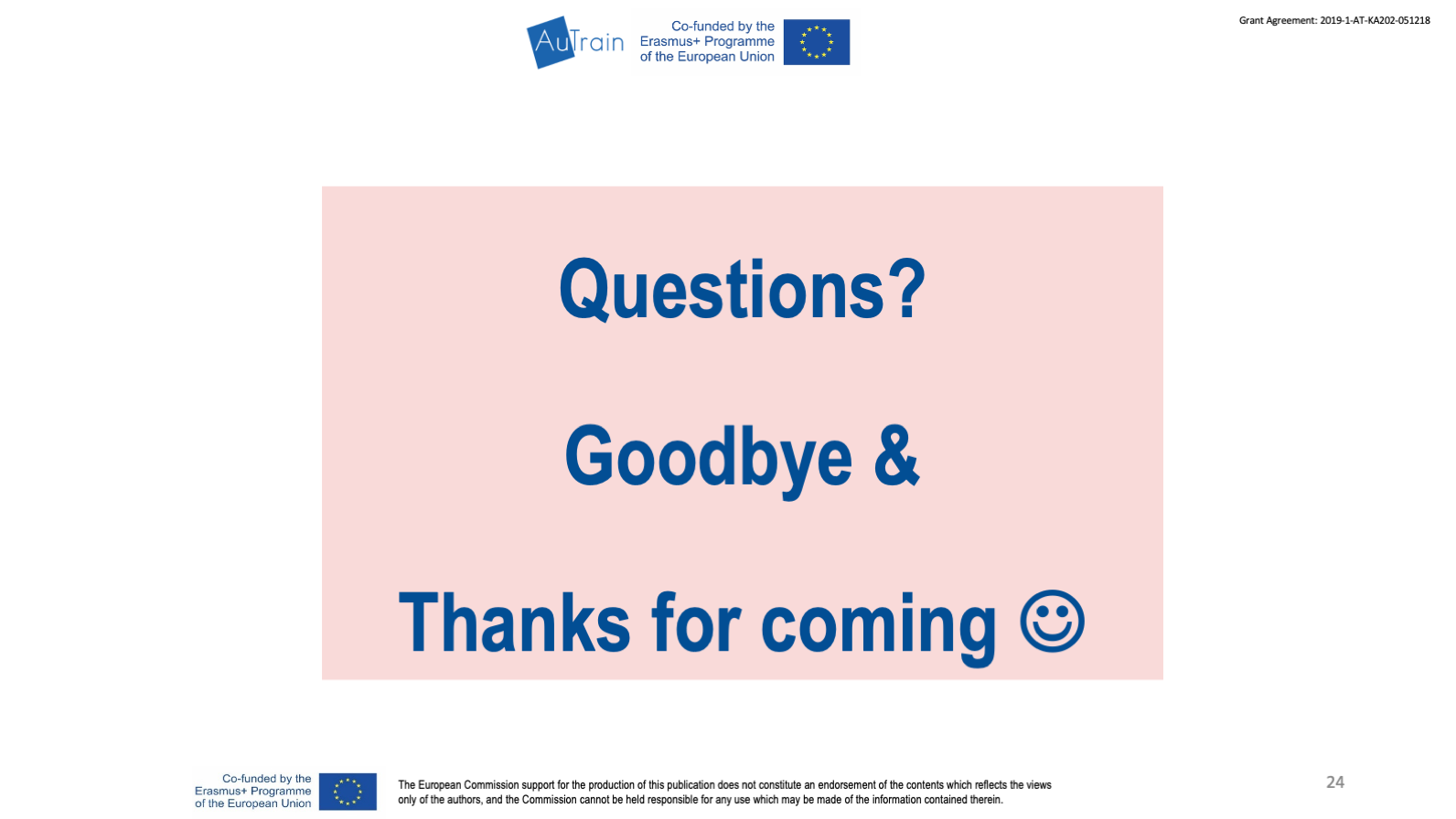
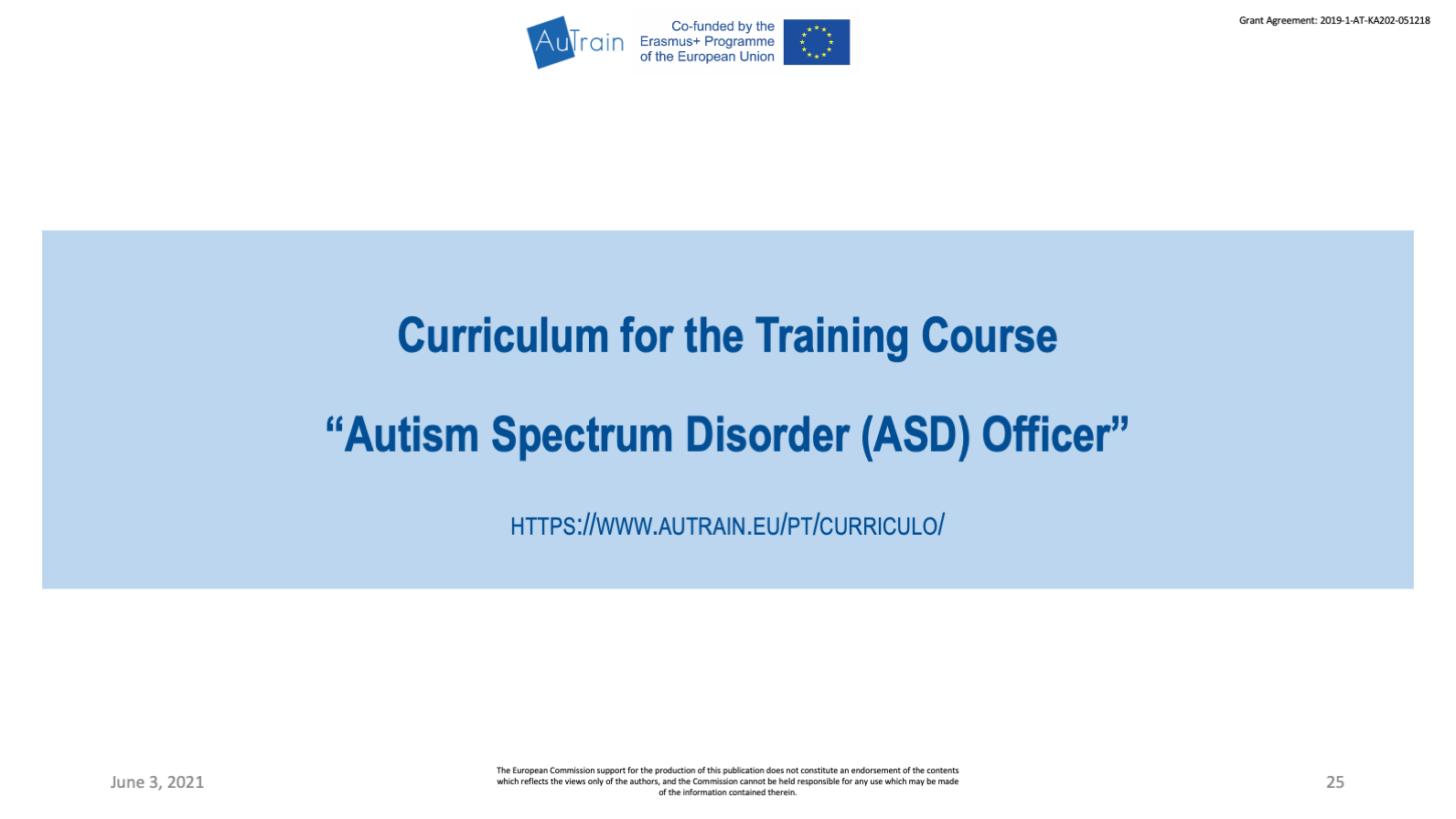
Ask for any question participants may have. As you intentionally say goodbye, give participants a sense of purpose through making meaning of their hardships and accomplishments within the module. Empower them by reminding them of the skills and strengths they possess now about inclusion and friendly language.
Reflection
In the end of the module write a reflection on what occurred during the process. Concerning the participants’ learning, the activities, the organisation, etc.
